Lettuce is one of those plants that you can usually count on to give you a hefty harvest with minimal fuss.
You probably won’t have to beg, coddle, and pamper those leaves in order to get what you want from them.
But now and then, lettuce can disappoint us, such as when it starts flowering prematurely.

We link to vendors to help you find relevant products. If you buy from one of our links, we may earn a commission.
Also known as bolting, early flowering is a sign that the plant is ending its individual life cycle and sending out seeds to continue the circle of life.
While eventual flowering is inevitable, there are many steps you can take to prevent it from occurring too soon, and there are things you can do once it does happen.
That’s what we’re going to discuss in this guide! Here’s what you can expect:
What You’ll Learn
Lettuce is supposed to go to seed. That’s how it reproduces. So when it’s forming flowers, it’s doing something totally normal.
But we don’t want it to go to seed prematurely, because the plant stops forming leaves, and any existing leaves become bitter.
We call this bolting, and we want to avoid it so that we can enjoy the harvest.
Why Do Lettuce Plants Form Flowers?
All lettuce plants will eventually form flowers, these will eventually form seeds, and those seeds will fall to the ground.
This takes a lot of energy, as you can probably imagine, and moving on to the reproductive phase of life means the plant has to conserve energy from elsewhere.
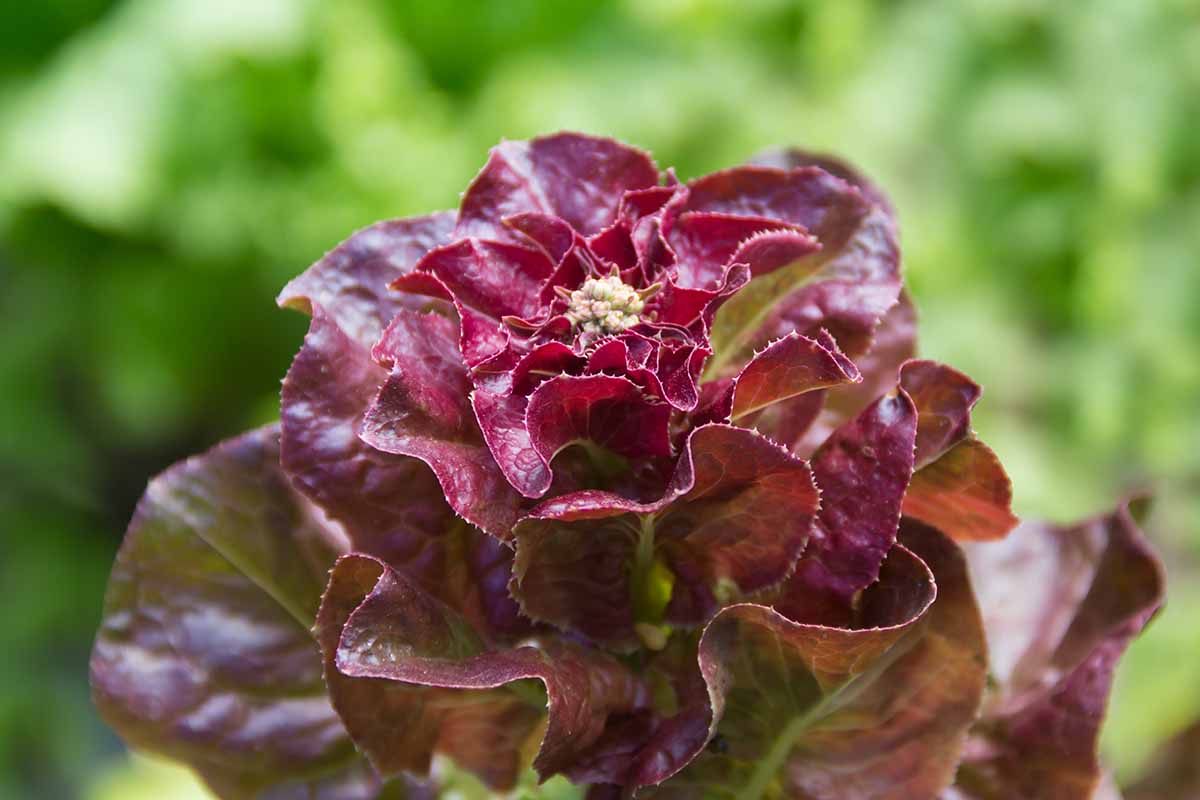
As a result, it stops putting energy into producing the parts we want to eat. The existing leaves also develop a bitter taste.
Particularly when it happens early in the season, we call this bolting, and we want to avoid it so we can enjoy our plants.
Lettuces aren’t the only plants that will bolt. Lots of cold-weather veggies like broccoli, turnips, beets, and spinach are prone to bolting under certain conditions.
How to Identify Bolting
It takes a keen eye, but you can actually tell when your lettuce is about to flower.
The first thing you’ll notice is that the central stalk starts to grow longer. That’s the stalk that will eventually hold the flowers and then seeds.

If you take a nibble of some leaves and you find that they’re uncharacteristically bitter, that’s another good sign that something is going on.
How to Prevent Bolting
Most of us grow lettuce in the spring or fall because these are plants that don’t like it hot.
And those hotter temperatures will give plants the idea that their lives are quickly approaching their end, encouraging them to hurry up and produce seeds!
It’s pretty challenging to try to grow this veggie in the summer, no matter where you live. If you’re worried about timing things right, just know that most types are better off experiencing a brief freeze than anything over 70°F.
Many people will advise you to grow your crop in full shade to help prevent bolting.
While it’s your garden and you should do what you want, this is not the best method. Some afternoon shade is fine, but lettuce grows best in full to partial sun.
The shadier it is, the less flavorful the leaves will be and the smaller your harvest will be.
But if your choices are to grow a plant in full sun when you know the temperature will regularly climb above 70°F or you could plant in some shade instead, it’s probably better to go the second route.
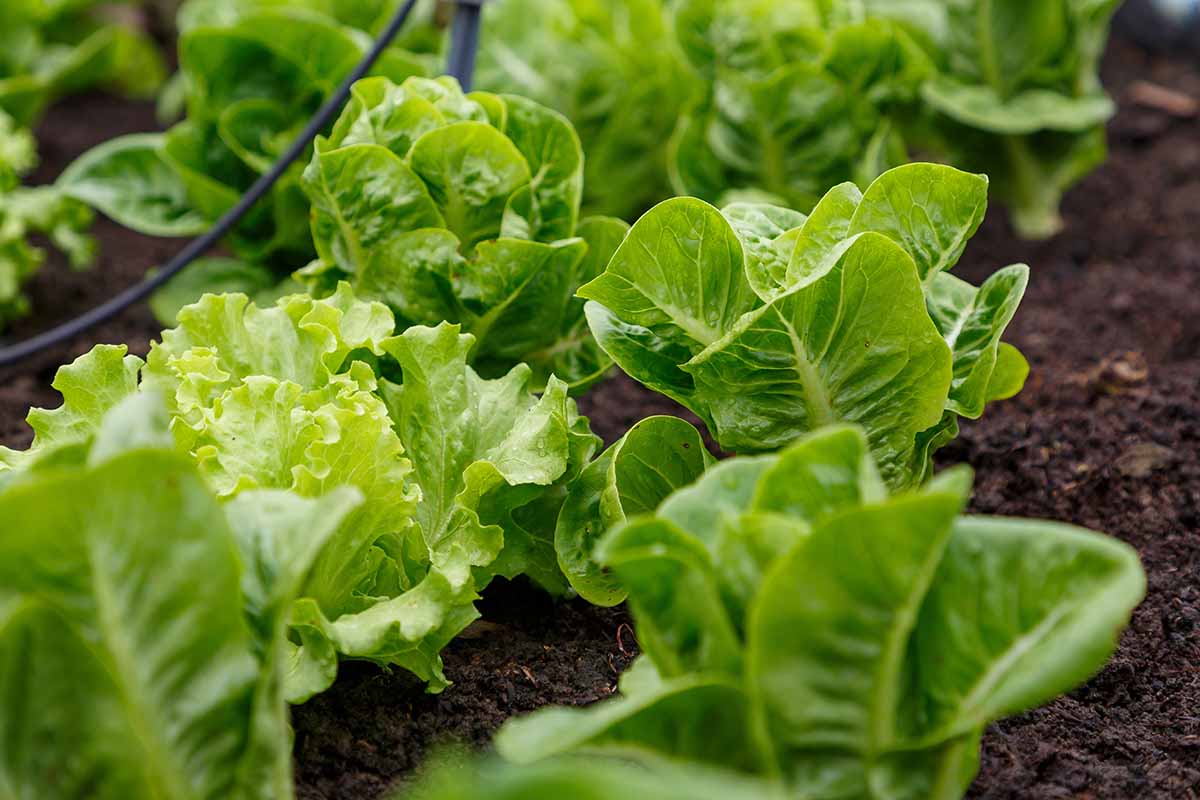
A better idea is to have a shade cloth on hand. That way, you can cover your garden bed during particularly hot times.
Whenever the mercury begins to climb above 60°F, depending on the cultivar, is the time to act. Be sure to remove the cloth when temps dip below 70°F again.
Water is also important for preventing plants from flowering too soon. Plants that experience drought might start to get the idea that it’s better to hurry and send out seeds than to keep growing and hope for better conditions.
Do your best to keep the soil consistently moist. An inch-thick layer of organic mulch like leaf litter or finely shredded hardwood can help keep that water where you want it.
Lettuce will also begin to flower when the days are long, especially when this is combined with one of the other factors described above.
You can’t do much to control the length of the day, which is another reason why it is best to plant in the spring or fall.
What to Do If Your Plants Bolt
Once your lettuce bolts, you can’t turn back time and undo it. That ship has unfortunately sailed.
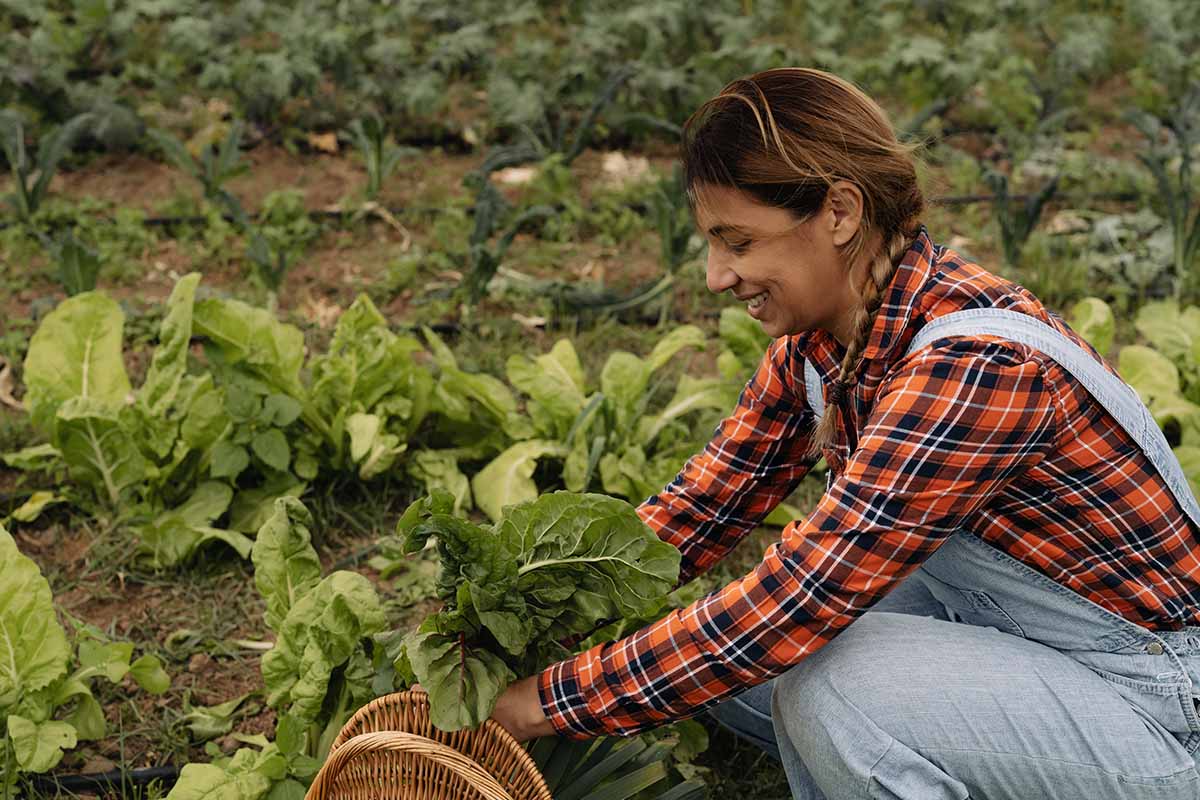
At this point, you have three options:
If it’s early enough in the season that there is time for the plant to grow another set of leaves, cut the entire plant back to the ground. It might just pop back up again with fresh foliage.
Otherwise, go ahead and let the plant form seeds. You can harvest them and use them to grow new crops in the fall, or next year. It’s kind of fun to watch the plant move through the final stages of its life cycle, forming flowers that turn into seeds.
Finally, you can pull out the plant, try to salvage any leaves that still taste good, and try again another time. It’s perfectly safe to eat the leaves from a plant that has bolted.
Take a nibble before you commit to chowing down to determine if the flavor is to your liking. Some people love bitter flavors – just look at the legion of fans of radicchio.
Bolt-Resistant Cultivars
Some types are more prone to bolting than others, and some are known for their resistance to going to seed prematurely.
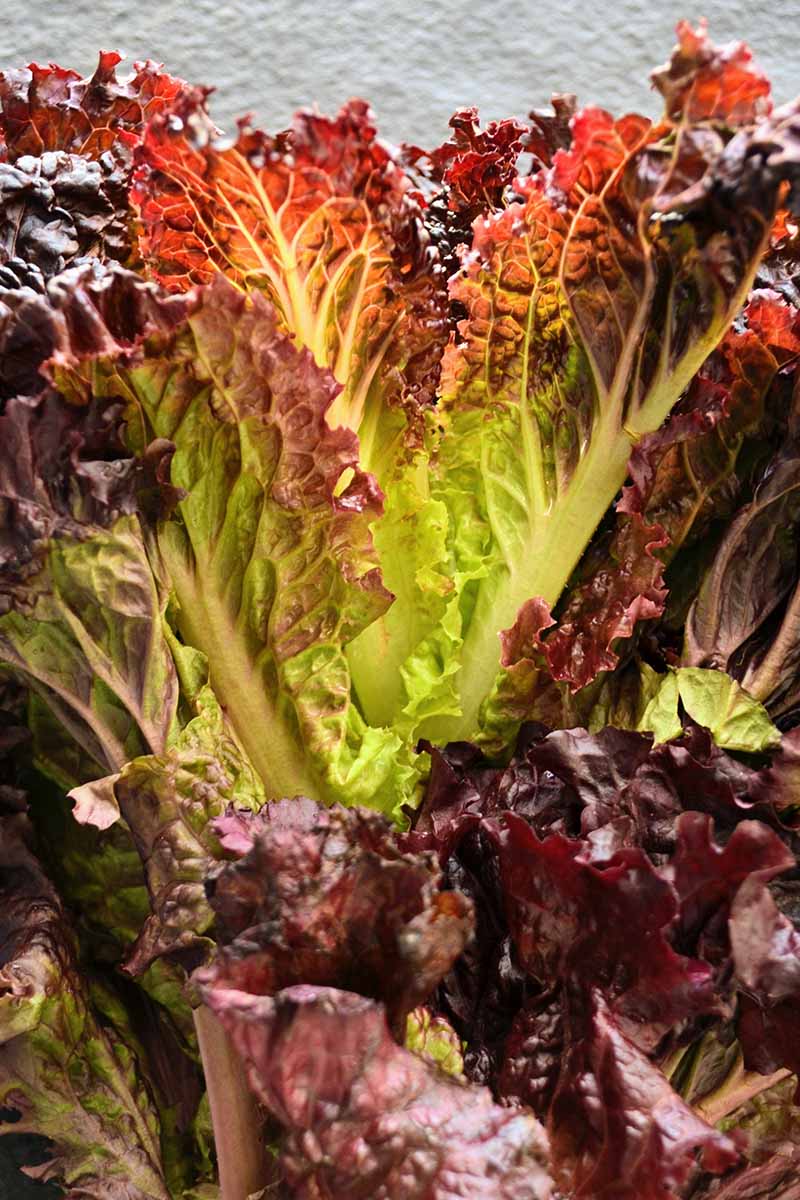
Butterheads or Batavians, for instance, are generally the most bolt-resistant types. If you’re out shopping for lettuce that resists bolting, look for these types. Loose leaf types tend to bolt the quickest.
You should also look for those cultivars labeled as heat tolerant or slow to bolt. Some are even named with monikers that make their resistance to premature flowering obvious, like ‘Slobolt.’
Planting one of these is not a guarantee that they won’t start to send out flowers earlier than you’d like, but it’s certainly a good first step to reducing the likelihood.
Here are a few bolt-resistant favorites:
Ice Queen
If I had to pick just one lettuce to grow for the rest of my life, it would be this one.
‘Ice Queen’(Lactuca sativa ‘Reine des Glaces’) is a popular heirloom cultivar that’s sweet, flavorful, and crispy. She’s also slow to bolt, whether it’s roasty hot or there’s not quite enough water.
If you’d like to give this one a try, visit Botanical Interests to purchase a gram of seeds.
Learn more about growing ‘Ice Queen’ in our guide.
New Red Fire
This red leaf type is not only resistant to bolting, but it also resists diseases like downy mildew and bottom rot.
Plus, the red and green leaves look downright pretty in the garden. It’s worthy of being grown as an ornamental.
Botanical Interests carries 500-milligram packets of organic ‘New Red Fire’ seeds.
Rouge d’Hiver
The French sure know how to breed bolt-resistant beauties. Also known as ‘Red Winter,’ this heirloom romaine has a sweet, buttery flavor and attractive red leaves.

To bring home a 750-milligram packet of ’Rouge d’Hiver’ seeds, visit Botanical Interests.
Encourage Leaves, Not Flowers
Flowers are wonderful, just not when they’re growing on our lettuces. But it’s possible to avoid bolting, and I hope you now feel equipped to do just that.
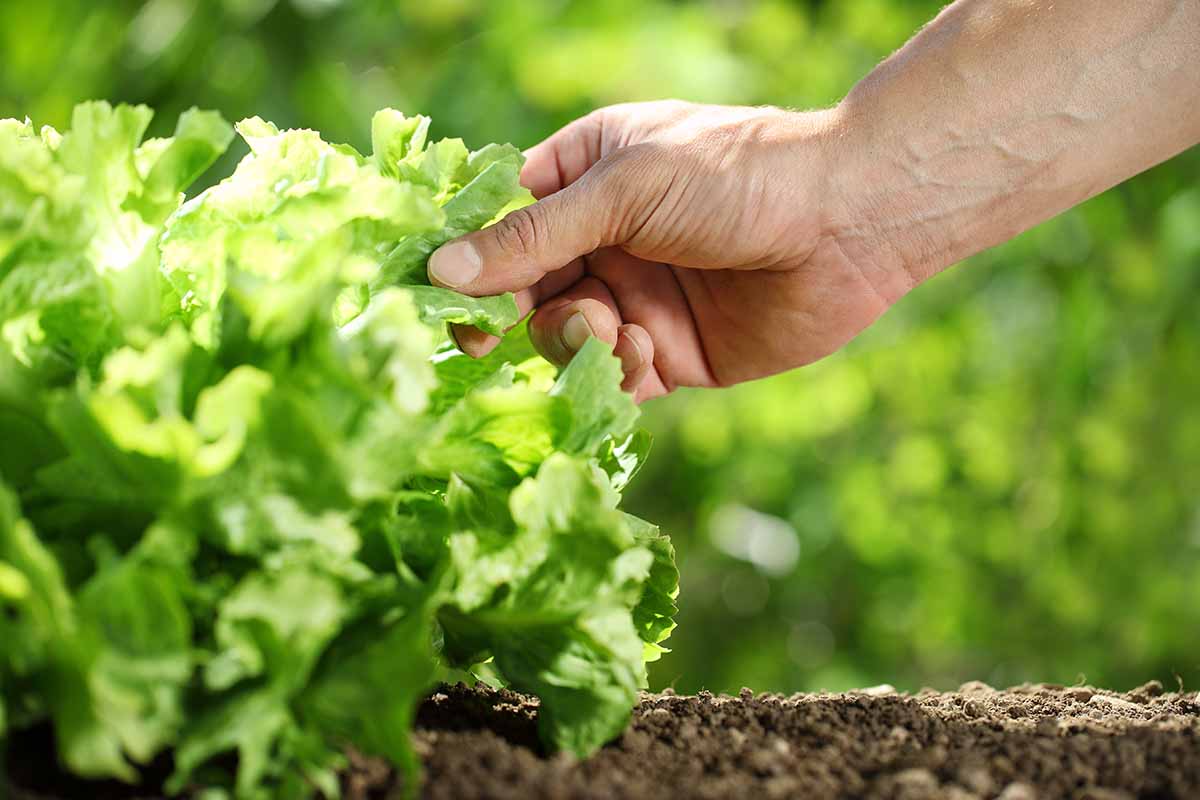
What kind of lettuce are you growing? Do you have a favorite bolt-resistant type that we missed? Let us know in the comments.
I hope this guide helped. If so, we have lots of other lettuce-growing guides that you might find useful on your gardening journey. Check these out next:

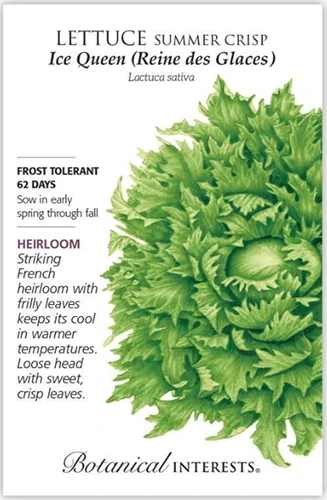
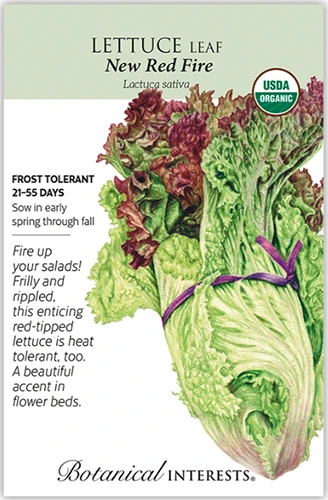
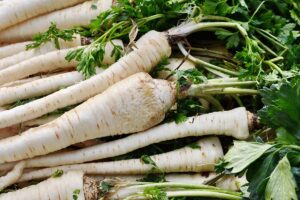
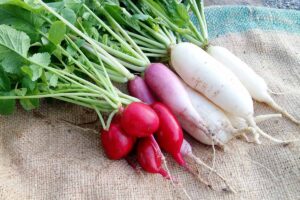
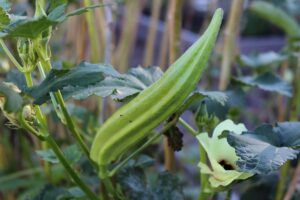
Very informative
Thanks for reading, JJ!